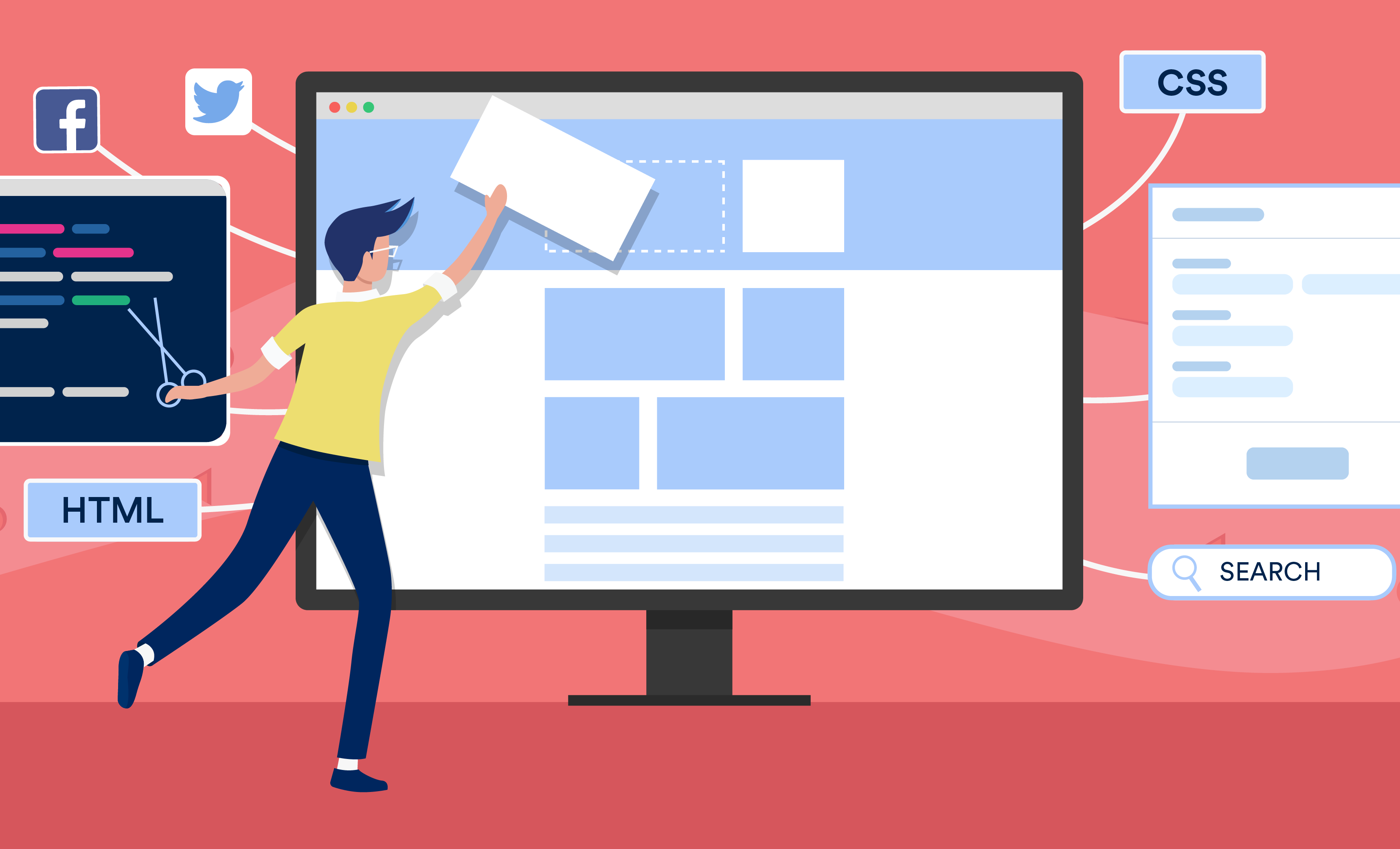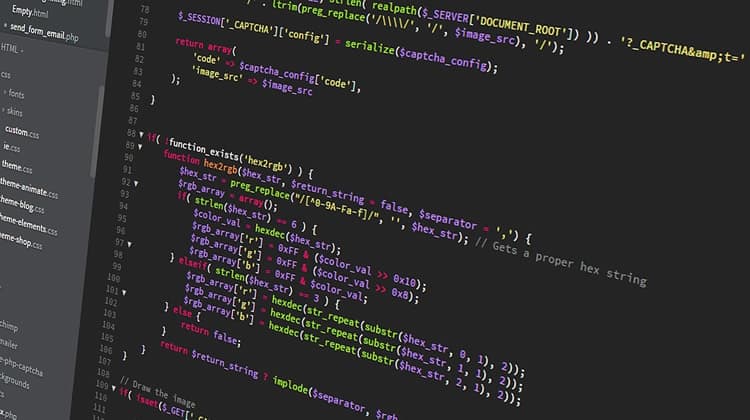All Categories
Featured
Table of Contents
- – Web Designer: Learn The 9 Skills You Need In 2...
- – Webdesign Designs, Themes, Templates And ... ...
- – Lifted Logic: Web Design In Kansas City - Seo...
- – Html Responsive Web Design - W3schools Tips a...
- – Html Responsive Web Design - W3schools Tips a...
- – Web Design - Website Design Tutorials, Articl...
- – Html Responsive Web Design - W3schools Tips ...
- – Web Design Ledger: Homepage Tips and Tricks:
- – 34 Of The Best Website Designs To Inspire Yo...
- – Responsive Web Design - A List Apart Tips an...
- – Web Design - The First 100 Years - Idle Word...
Web Designer: Learn The 9 Skills You Need In 2022 - Skillcrush Tips and Tricks:
Quick summary Functionality and the utility, not the visual style, identify the success or failure of a site. Given that the visitor of the page is the only individual who clicks the mouse and for that reason decides whatever, user-centric design has developed as a standard method for effective and profit-oriented web style - web design frederick md.
and the energy, not the visual design, identify the success or failure of a site. Considering that the visitor of the page is the only individual who clicks the mouse and therefore chooses whatever, user-centric style has actually become a basic method for effective and profit-oriented website design. If users can't utilize a feature, it may as well not exist.
g. where the search box must be put) as it has currently been done in a number of short articles; rather we focus on the approaches which, used effectively, can lead to more advanced design decisions and simplify the process of viewing presented details. Please observe that you may be interested in the usability-related articles we have actually published before: Concepts Of Excellent Site Design And Reliable Web Design Standards, In order to utilize the concepts effectively we first need to understand how users interact with websites, how they believe and what are the basic patterns of users' behavior.
Webdesign Designs, Themes, Templates And ... - Dribbble Tips and Tricks:
Visitors glance at each brand-new page, scan some of the text, and click the very first link that captures their interest or vaguely resembles the thing they're searching for. There are big parts of the page they do not even look at. Most users browse for something fascinating (or beneficial) and clickable; as quickly as some appealing prospects are found, users click.
If a page supplies users with high-quality content, they are willing to compromise the material with advertisements and the style of the website. This is the reason not-that-well-designed websites with premium content acquire a great deal of traffic over years. Material is more vital than the design which supports it.

Users don't check out, they scan. Notification how "hot" locations abrupt in the middle of sentences. This is typical for the scanning process. Very easy concept: If a site isn't able to satisfy users' expectations, then designer stopped working to get his job done correctly and the business loses money. The greater is the cognitive load and the less intuitive is the navigation, the more prepared are users to leave the website and look for options.
Lifted Logic: Web Design In Kansas City - Seo - Website ... Tips and Tricks:
Neither do they scan website in a linear style, going sequentially from one site section to another one. Rather users satisfice; they choose the very first sensible option. As quickly as they discover a link that seems like it might lead to the objective, there is a really great chance that it will be right away clicked.
It doesn't matter to us if we understand how things work, as long as we can utilize them. If your audience is going to imitate you're designing signboard, then design great billboards." Users want to be able to control their browser and rely on the constant information presentation throughout the website.
If the navigation and site architecture aren't instinctive, the number of concern marks grows and makes it harder for users to understand how the system works and how to obtain from point A to point B. A clear structure, moderate visual ideas and easily recognizable links can assist users to discover their path to their aim.
Html Responsive Web Design - W3schools Tips and Tricks:
claims to be "beyond channels, beyond items, beyond distribution". What does it indicate? Because users tend to check out sites according to the "F"-pattern, these 3 declarations would be the first components users will see on the page once it is filled. The style itself is basic and instinctive, to understand what the page is about the user requires to browse for the response.
As soon as you've achieved this, you can communicate why the system is beneficial and how users can benefit from it. Don't Misuse Users' Persistence, In every job when you are going to offer your visitors some service or tool, attempt to keep your user requirements minimal.
Newbie visitors want to, not filling long web forms for an account they might never use in the future. Let users explore the site and discover your services without requiring them into sharing personal data. It's not sensible to force users to get in an email address to test the function.
Html Responsive Web Design - W3schools Tips and Tricks:
And that's what you desire your users to feel on your web site. The registration can be done in less than 30 seconds as the form has horizontal orientation, the user doesn't even need to scroll the page.
A user registration alone suffices of an obstacle to user navigation to cut down on incoming traffic. 3. Manage To Focus Users' Attention, As websites supply both static and dynamic content, some aspects of the interface attract attention more than others do. Clearly, images are more appealing than the text simply as the sentences marked as bold are more attractive than plain text.
Focusing users' attention to particular locations of the website with a moderate use of visual aspects can assist your visitors to get from point A to point B without thinking of how it really is expected to be done. The less concern marks visitors have, the they have and the more trust they can establish towards the company the website represents.
Web Design - Website Design Tutorials, Articles And Free Stuff Tips and Tricks:
4. Pursue Function Exposure, Modern web styles are normally criticized due to their technique of assisting users with aesthetically appealing 1-2-3-done-steps, big buttons with visual results etc. From the style point of view these aspects really aren't a bad thing. On the contrary, such as they lead the visitors through the site content in an extremely easy and user-friendly method.
The website has 9 primary navigation options which show up at the very first glance. The choice of colors may be too light. is a fundamental concept of successful interface design. It doesn't actually matter how this is accomplished. What matters is that the material is well-understood and visitors feel comfy with the method they connect with the system.
Rather a cost: just what visitors are looking for. An optimal option for reliable writing is touse short and concise phrases (come to the point as rapidly as possible), usage scannable design (classify the content, utilize multiple heading levels, utilize visual elements and bulleted lists which break the flow of consistent text blocks), use plain and objective language (a promotion does not require to sound like advertisement; provide your users some sensible and unbiased factor why they must use your service or remain on your website)6.
Html Responsive Web Design - W3schools Tips and Tricks:
Users are rarely on a website to delight in the design; moreover, in many cases they are searching for the info despite the design - web design frederick md. Pursue simpleness rather of complexity. From the visitors' perspective, the very best website style is a pure text, without any ads or more content obstructs matching precisely the query visitors used or the material they've been trying to find.
Finch plainly provides the details about the website and provides visitors an option of choices without overcrowding them with unnecessary material. Not just does it help to for the visitors, but it makes it possible to view the information provided on the screen.
Complex structures are harder to check out, scan, evaluate and deal with. If you have the option between separating two design sectors by a noticeable line or by some whitespace, it's generally much better to use the whitespace service. (Simon's Law): the much better you manage to supply users with a sense of visual hierarchy, the simpler your material will be to perceive.
Web Design Ledger: Homepage Tips and Tricks:
The very same conventions and rules must be applied to all elements.: do the most with the least quantity of cues and visual aspects. 4 significant points to be considered: simpleness, clearness, diversity, and emphasis. Simplicity includes only the aspects that are essential for communication. Clarity: all parts ought to be designed so their meaning is not unclear.
Conventions Are Our Buddies, Conventional design of website components does not result in a boring web site. In fact, as they reduce the finding out curve, the need to determine how things work. It would be a functionality nightmare if all websites had various visual discussion of RSS-feeds. That's not that various from our regular life where we tend to get used to fundamental principles of how we arrange data (folders) or do shopping (positioning of products).
understand what they're anticipating from a site navigation, text structure, search placement etc. A normal example from usability sessions is to translate the page in Japanese (assuming your web users don't understand Japanese, e. g. with Babelfish) and provide your use testers with a task to find something in the page of various language.
34 Of The Best Website Designs To Inspire You In 2022 Tips and Tricks:
Steve Krug suggests that it's much better to, but make the most of conventions when you don't. 10. Test Early, Test Frequently, This so-called TETO-principle needs to be applied to every web design task as functionality tests typically offer into substantial problems and issues connected to a given design. Test not far too late, not too little and not for the incorrect reasons.
Some crucial points to remember: according to Steve Krug, and screening one user early in the job is much better than testing 50 near completion. Accoring to Boehm's first law, errors are most frequent throughout requirements and design activities and are the more expensive the later they are eliminated.
That indicates that you design something, test it, fix it and then check it once again. There may be issues which haven't been discovered throughout the preliminary as users were virtually blocked by other issues. usability tests. Either you'll be indicated the issues you have or you'll be indicated the absence of significant design flaws which remains in both cases a helpful insight for your task.
Responsive Web Design - A List Apart Tips and Tricks:

This holds for designers as well. After you've worked on a website for couple of weeks, you can't observe it from a fresh point of view any longer. You know how it is built and for that reason you understand precisely how it works you have the wisdom independent testers and visitors of your site would not have.
It can be linked to other areas such as graphic style, user experience, and multimedia arts, but is more aptly seen from a technological perspective. It has ended up being a large part of individuals's daily lives. It is difficult to picture the Web without animated graphics, different designs of typography, background, videos and music.

Throughout 1991 to 1993 the World Wide Web was born. Text-only pages could be viewed using a basic line-mode internet browser. There had actually been no integrated technique to graphic design aspects such as images or noises.
Web Design - The First 100 Years - Idle Words Tips and Tricks:
The W3C was developed in October 1994 to "lead the Web to its complete potential by establishing typical protocols that promote its development and ensure its interoperability." This discouraged any one business from monopolizing a propriety web browser and programming language, which could have changed the effect of the World Wide Web as a whole.
As this has taken place the technology of the web has likewise moved on. There have also been significant changes in the way individuals use and access the web, and this has actually changed how websites are designed.
Learn more about Lovell Media Group LLC or TrainACETable of Contents
- – Web Designer: Learn The 9 Skills You Need In 2...
- – Webdesign Designs, Themes, Templates And ... ...
- – Lifted Logic: Web Design In Kansas City - Seo...
- – Html Responsive Web Design - W3schools Tips a...
- – Html Responsive Web Design - W3schools Tips a...
- – Web Design - Website Design Tutorials, Articl...
- – Html Responsive Web Design - W3schools Tips ...
- – Web Design Ledger: Homepage Tips and Tricks:
- – 34 Of The Best Website Designs To Inspire Yo...
- – Responsive Web Design - A List Apart Tips an...
- – Web Design - The First 100 Years - Idle Word...
Latest Posts
Google Web Designer - Home Tips and Tricks:
Web Developers And Digital Designers - Bureau Of Labor ... Tips and Tricks:
Top Web Design Agencies Ranked - 2022 Reviews - Clutch.co Tips and Tricks:
More
Latest Posts
Google Web Designer - Home Tips and Tricks:
Web Developers And Digital Designers - Bureau Of Labor ... Tips and Tricks:
Top Web Design Agencies Ranked - 2022 Reviews - Clutch.co Tips and Tricks: